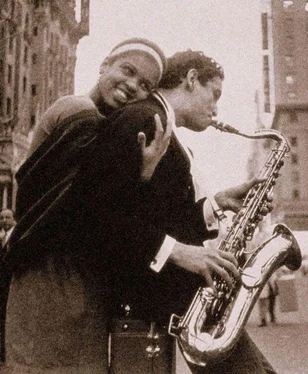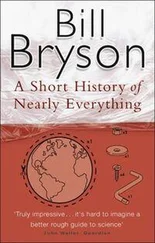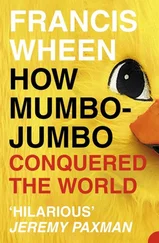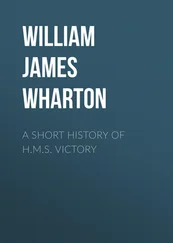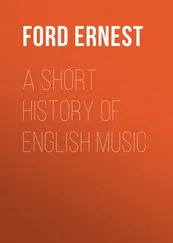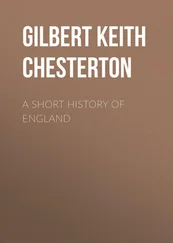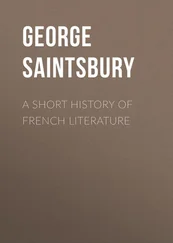Michael Morangelli - Jazz - A Short History
Здесь есть возможность читать онлайн «Michael Morangelli - Jazz - A Short History» весь текст электронной книги совершенно бесплатно (целиком полную версию без сокращений). В некоторых случаях можно слушать аудио, скачать через торрент в формате fb2 и присутствует краткое содержание. Жанр: Классическая проза, на английском языке. Описание произведения, (предисловие) а так же отзывы посетителей доступны на портале библиотеки ЛибКат.
- Название:Jazz: A Short History
- Автор:
- Жанр:
- Год:неизвестен
- ISBN:нет данных
- Рейтинг книги:3 / 5. Голосов: 1
-
Избранное:Добавить в избранное
- Отзывы:
-
Ваша оценка:
- 60
- 1
- 2
- 3
- 4
- 5
Jazz: A Short History: краткое содержание, описание и аннотация
Предлагаем к чтению аннотацию, описание, краткое содержание или предисловие (зависит от того, что написал сам автор книги «Jazz: A Short History»). Если вы не нашли необходимую информацию о книге — напишите в комментариях, мы постараемся отыскать её.
Jazz: A Short History — читать онлайн бесплатно полную книгу (весь текст) целиком
Ниже представлен текст книги, разбитый по страницам. Система сохранения места последней прочитанной страницы, позволяет с удобством читать онлайн бесплатно книгу «Jazz: A Short History», без необходимости каждый раз заново искать на чём Вы остановились. Поставьте закладку, и сможете в любой момент перейти на страницу, на которой закончили чтение.
Интервал:
Закладка:
The one thing I found most interesting was the Bandstands. Invariably, they had an appearance of being part of the room - not add ons stuck in as an after thought or in a corner. The area was decorated to frame the musicians as a center of attention and there was room to sit and set up properly - including the Baby Grand piano….but, no amplifiers, microphones, or wires. The dress was most familiar, only different in style - dark suits or tuxedos, with a hint at a uniformed dress (same ties, or cut of the suit).
The instrumention seems to build on the basic 5 piece unit as the decade of the ‘20’s advanced. The reed players doubled on saxophone, and the units got bigger with two saxes added, the addition of the String Bass (still doubling on Tuba/Sousaphone), and the increased appearance of the Guitar - usually as a double by the Banjo player. By the last pictures in this chapter, the bands seemed to average 7 players.
This seems to support the ‘text book’ resources describing the differences between New Orleans and Chicago Dixieland: • Tenor Sax was added • Guitar replaced the Banjo • Addition of the Piano and String Bass This change in instrumentation was also accompanied by stylistic changes in the music. For now, the soloist gained in importance and the ensemble supported this soloist; the into’s and ending’s became more elaborate; the voicings moved in parallel; and the flat four pulse was supplanted by the accented 2 amp; 4.
This music was evolving to adapt to different circumstances and environments. With the closing of Storyville by the Navy in 1917, the music on New Orleans fanned out across the country - not just ‘up the river’ to Chicago. It spread to any location that had work opportunities and transportation - Kansas City and New York. But it was Chicago which provided the easiest access. And it was the transplanted New Orleans musicians who created the style (Berendt states that Chicago Dixieland was created by young white musicians trying to copy the New Orleans players). But the New Orleans players dominated the Chicago Jazz scene early on. King Oliver lead the most King Oliver’s Creole Jazz Band important New Orleans band in Chicago, Louis Armstrong formed his Hot Five and Hot Seven here, Jelly Roll Morton the Red Hot Chili Peppers, and Johnny Dodds his New Orleans Wanderers.
This was a period of flux for the nation as a whole. WW1 would push the nation into the “modern era”, new technologies were emerging - radio, talking pictures, records, and the migration from south to north (of which the New Orleans musicians were only a part) was changing the demographics of the country. With the advent of the ‘20’s, a period of economic prosperity and changing social structure was slowly remaking the face of the United States. In my mind we were evolving from a regional outlook into a national one - not overnight but slowly and steadily aided by the radio, the talking picture, the record player, and the increased ease of transportation. F. Scott Fitzgerald gave the name to this era - the Jazz Age…more a statement of attitude than music.
But, the name was descriptive of the excitement that swept the country with this new music. It was spread by the advent of the record and the emerging technology of the radio. The event which marks this is the 1917 debut of the Original Dixieland Jazz Band at Reisenweber’s Cabaret on Columbus Circle in New York - they also made the first Jazz recording in that same year. Jazz moved to New York - Red Nichols, Miff Mole, and Jimmy Dorsey all recorded in the city. A crop of young musicians entered the field - Pee Wee Russell, Dave Tough, Bud Freeman, Gene Krupa, Eddie Condon, Mezz Mezzrow, Benny Goodman, Bix Biederbecke, Muggsy Spanier, Bunny Berrigan…the “Austin High Gang” and their friends.
The record and the radio were major events in the evolution of Jazz. The timing was just right - 1917 for the first recording (1921 for the first black group - Kid Ory) and Sept. 14, 1920 for the first radio show.
These two technologies made the music not just a live event or service industry but a commodity - you could buy it and walk home with it. Prior to this, the closest was the sheet music industry. The sales of which reached a million units in 1905 and was shown to be a money making commodity by William Handy the American composer (Memphis Blues, Yellow Dog Blues, St. Louis Blues, etc.) - Jazz could be written down and sold; now it was recorded and sold. A secondary effect of the record was it could be shipped, carried, exported, and imported - you no longer had to be in New York or Chicago or New Orleans or Kansas City to hear what the bands were doing! Jazz became a true popular culture side by side with the radio and the record. The books I use for these articles all state that the ODJB was not the first or the only Jazz group playing the new style but just in the right place at the right time - so was the Music… right at the advent of the technological developments to spread this music nationally and to a large popular audience.
This music is still available - you can buy it and carry it home. Here’s a short list:
1. The Genius of Louis Armstrong, Volume 1:1923-1933; Columbia G 30416; The John Hammond Collection. This includes cuts from The Hot Five and The Hot Seven.
2. The Immortal Johnny Dodds, South Side Chicago Jazz of the 1920’s, Milestone MLP 2002. This has a cut with Freddy Keppard.
3. Louis Armstrong and King Oliver with Lil Armstrong, Sidney Bechet, Baby Dodds, Jelly Roll Morton, Milestone M-47017. This has 16 cuts by King Oliver’s Creole Jazz Band.
4. Bix Beiderbecke and the Chicago Cornets, Milestone M-47019.
This features Bix with the Wolverines and has cuts with Miff Mole, Frank Trumbauer, Tommy Dorsey, and Muggsy Spanier.
This period is for me the start of Jazz - it is alive still. The sounds of the names, bands, and places can still be heard - the pictures from Keepnews are no longer two dimensional but three….one can still Louis Armstrong’s Hot Five hear their music. From this point on, the one notable fact is the documentation on recording of the musics evolution and the changes brought by a changing society and culture of which it is so much a part. It is this opportunity to listen chronologically which has shaped my attitude about Jazz. Jazz evolves - one style it is not and the new builds or evolves or reacts in relation to what came before…to meet new cultural or technological developments.
7 The Passage To Swing
The Swing Bands which emerged in the early ‘30’s actually owe their development to the tradition of the popular dance bands of the ‘20’s. It was not the Dixieland Jazz groups which evolved into these large units but Dance bands such as Paul Whiteman, Ben Pollack, and Jean Goldkette.
The Paul Whiteman band [to my mind actually a small orchestra or concert band] was a large group which basically adopted European Concert devices and flavored them with Jazz Elements. He did however have a major impact on the popularity of the Jazz Idiom and helped set the stage for the Swing Era.
Keepnews’ picture of the band in 1928 shows 25 musicians - including Bix Biederbecke and Frank Trumbauer; another in the same year shows 26 members - a second piano had been added. The instrumentation was very close to the standard Swing Band: 2 piano, 1 accordion, 4 Trumpet, 4 Trombone, 7 Reeds, 5 Violins, 2 Tuba/Bass, 1 Banjo, 1 Percussionist.
This band and its leader, while again not a Jazz Band, advanced the popularity of Jazz immeasurably. In February 12, 1924 Whiteman presented a ‘Jazz Concert’ at Aeolian Hall. This was a academic site and his aim was to to gain the jazz approval of the recognized authorities of music - he succeeded. It also paved the way for the popularity of large bands.
Whiteman and Goldkette organizations were aimed at larger venues - big ballrooms, hotels, major vaudeville and movie houses. His orchestra sounded fuller and richer than the Dixieland groups and they utilized carefully rehearsed arrangements. And, he made money - I am sure one of the major factors in the proliferation of the large groups.
Читать дальшеИнтервал:
Закладка:
Похожие книги на «Jazz: A Short History»
Представляем Вашему вниманию похожие книги на «Jazz: A Short History» списком для выбора. Мы отобрали схожую по названию и смыслу литературу в надежде предоставить читателям больше вариантов отыскать новые, интересные, ещё непрочитанные произведения.
Обсуждение, отзывы о книге «Jazz: A Short History» и просто собственные мнения читателей. Оставьте ваши комментарии, напишите, что Вы думаете о произведении, его смысле или главных героях. Укажите что конкретно понравилось, а что нет, и почему Вы так считаете.
